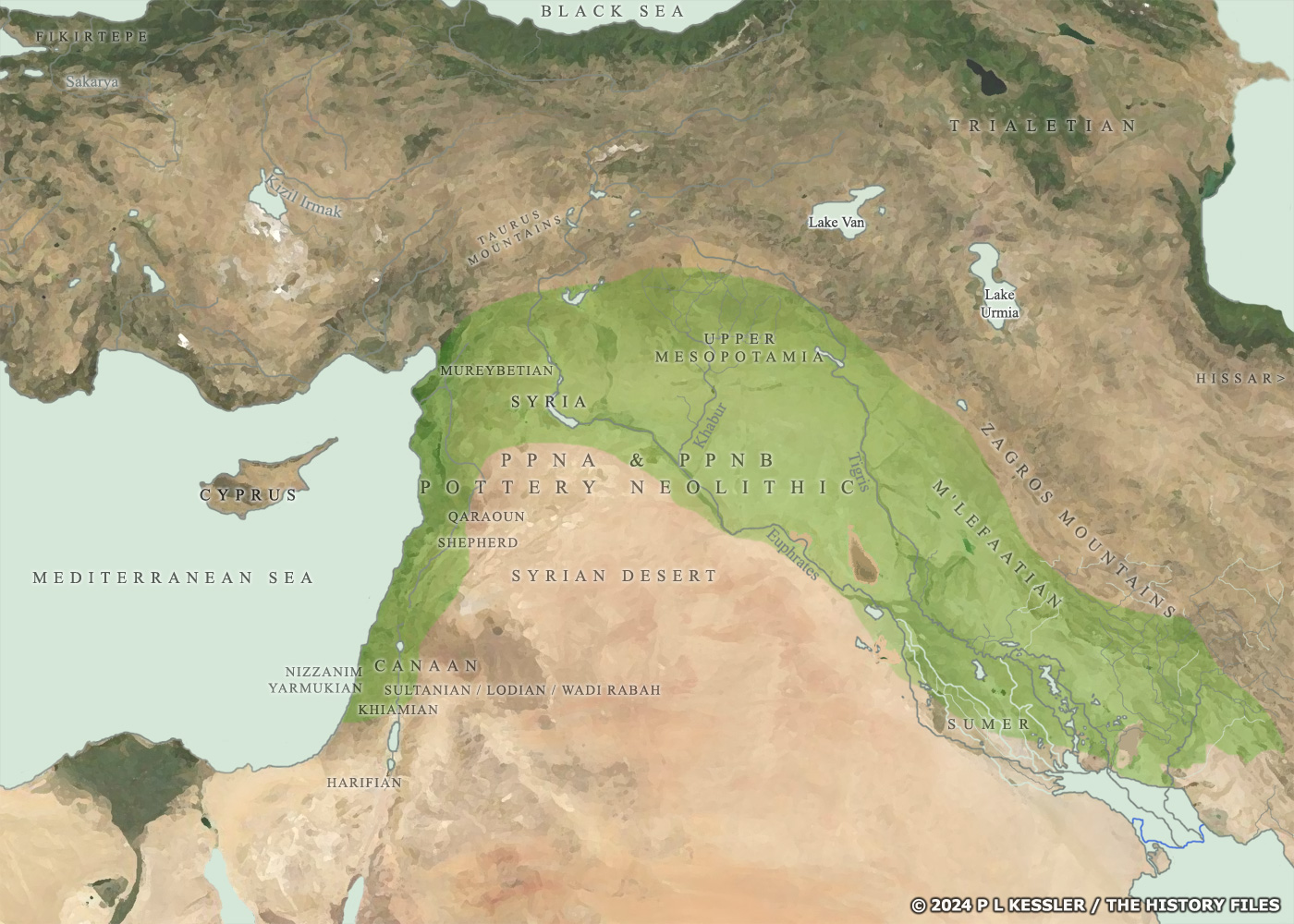|
|


|
Map of the Fertile Crescent of the Neolithic |
|
This map shows the general area of the Fertile Crescent in the Near East. It was from here, and especially - it seems - along its northern edges that the origins of agricultural farming emerged between about 10,000 BC and 6000 BC. The start of this process involved the Khiamian culture which has its type site near the Dead Sea, although it was far more universal across the western Fertile Crescent than that site alone would suggest. This emerged as a successor to the Epi-Palaeolithic Natufian culture. It witnessed the earliest use of wild crops, and it would take a good three millennia to produce reliably-domesticated forms of crops from these early beginnings. The localised Shepherd Neolithic was also part of this process, as was the equally localised Qaraoun. The next major culture (and step forwards) involved the Pre-Pottery Neolithic A (PPNA), a mix of hunter-gatherer and early Neolithic practices between about 9500-8800 BC. The Mureybetian also occurred in this period as a PPNA sub-phase, while the Harifian emerged in the Negev Desert at the end of this period. The Pre-Pottery Neolithic B (PPNB) was a step forwards again between 8800-6000 BC. Rectangular houses replacing circular dwellings and the first recognisable farming emerged as it would be understood today. On the eastern arm of the Fertile Crescent the M'lefaatian saw a continuation of PPNA practices at the expense of the older Zarzian culture. The Sultanian was a localised form of the PPNB in and around Jericho and the Dead Sea. The PPNB witnessed the beginnings of a great overflow of increased population sizes, with them migrating heavily into Anatolia (to found the Fikirtepe culture) and enter Europe to start its Neolithic), into Iran and the east, into Egypt, and also into the Caucasus. In the Levant the PPNB evolved into the Pottery Neolithic with the advent of true pottery-making (between 6000-3500 BC). This advance was presaged by three proto-Pottery Neolithic cultures in the form of the Lodian, Nizzanim, and Yarmukian. Again Jericho provided a key focal point of settlement and advance. Its Wadi Rabah culture succeeded the Lodian. The Pottery Neolithic would enter a Chalcolithic phase during its later days (around 4500-4000 BC) before giving way to the Bronze Age which witnessed the rise of city states. In the east the Hissar culture was a late Neolithic arrival (at the south-eastern corner of the Caspian Sea and not shown precisely on this map). Sumer would emerge as the earliest, greatest centre of city state-building in the fourth and third millennia BC. A clickable version of this map is available for desktop displays. To select a culture or region for further information, click on its name.
Map navigation: |
|
Original text and map copyright © P L Kessler
and the History Files. An original feature for the History Files. |